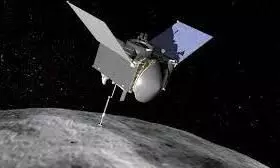
NASA prepares for unprecedented close encounter with asteroid in 2029
text_fieldsNASA scientists are gearing up for an extraordinary celestial event, as the OSIRIS-APEX spacecraft, previously known as OSIRIS-REx, is set to rendezvous with the asteroid Apophis during its close approach to Earth in 2029.
This near-Earth encounter is anticipated to be the closest any celestial object of this size has come to our planet in modern history.
Originally discovered in 2004, Apophis initially raised concerns about a potential collision with Earth in 2029. However, refined observations have ruled out any immediate impact risk, with the next approach projected to bring the asteroid within 20,000 miles (32,200 kms) of Earth.
The OSIRIS-APEX mission, directed by University of Arizona scientists, aims to take advantage of this rare opportunity to study Apophis up close.
The spacecraft, repurposed after its successful soil sample mission from a different asteroid, is expected to provide valuable insights into planetary formation. Furthermore, the gathered knowledge could contribute to the development of a defence system against potential asteroid collisions with Earth.
Michael Nolan, deputy principal investigator for the mission, said that Apophis, measuring about 1,110 feet (340 metres) across, will be visible to the naked eye for a few hours during its April 13, 2029, flyby. Although not expected to be a spectacular event, it presents a unique opportunity for scientific observation.
The tidal pull of Earth's gravity is anticipated to cause measurable disturbances to Apophis, altering its surface and orbital path. OSIRIS-APEX is set to observe and document these changes, providing crucial data on the asteroid's composition, density, and behaviour.
The spacecraft is scheduled to remain in close proximity to Apophis for 18 months, utilising rocket thrusters to orbit, manoeuvre, and even hover just above its surface. This extended observation period will allow scientists to uncover the mysteries hidden beneath Apophis's surface.
Beyond the scientific value, studying Apophis holds significance for planetary defence efforts. Understanding the properties of asteroids, especially their composition and behaviour, is crucial for developing effective strategies to deflect or mitigate potential impact threats.
While Apophis doesn't pose an existential threat, its size suggests that a hypersonic impact could still have devastating consequences on a regional scale. Michael Nolan noted that an impact of this nature, moving at high speeds, could result in significant damage, especially in densely populated areas or coastal regions.























